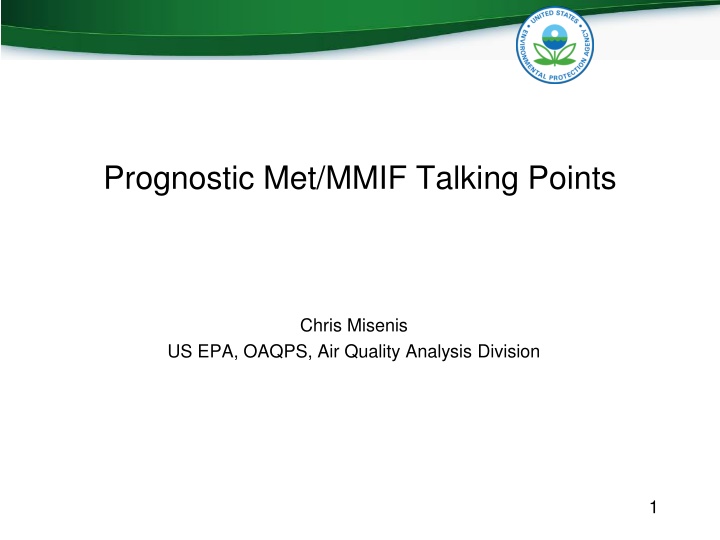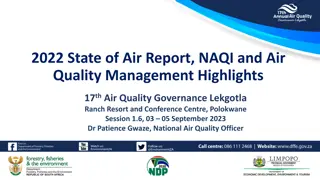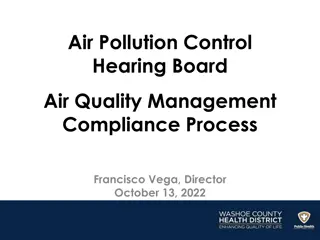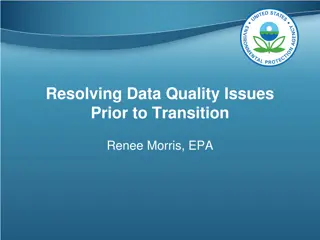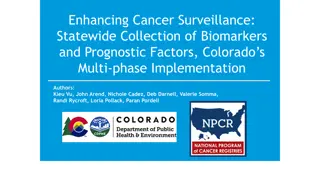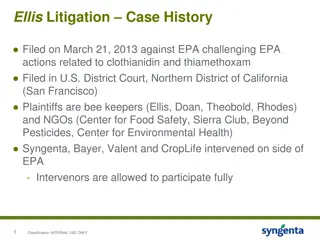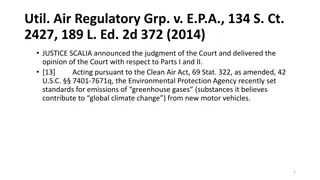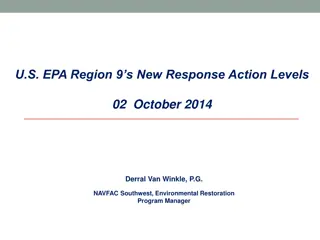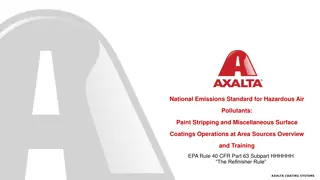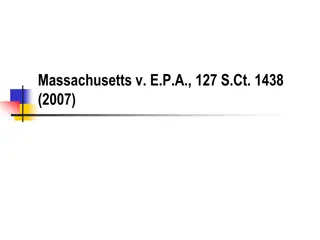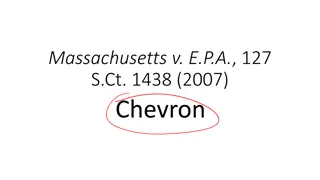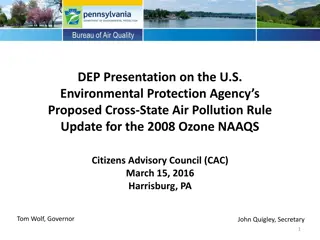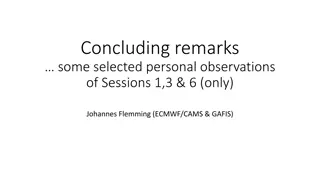Prognostic Met/MIMF Talking Points: EPA Air Quality Updates
Revisions to EPA's guideline on air quality models were updated in 2016, with changes effective in 2017. Prognostic meteorology is allowed for use in complex terrain areas where NWS data may not be representative. Evaluation and generation of prognostic meteorology involve assessing suitability and replicating meteorological issues. Professional judgment is required to follow EPA guidance and evaluate results effectively. Guidance is available for substitution in missing data scenarios.
Uploaded on Mar 05, 2025 | 0 Views
Download Presentation

Please find below an Image/Link to download the presentation.
The content on the website is provided AS IS for your information and personal use only. It may not be sold, licensed, or shared on other websites without obtaining consent from the author.If you encounter any issues during the download, it is possible that the publisher has removed the file from their server.
You are allowed to download the files provided on this website for personal or commercial use, subject to the condition that they are used lawfully. All files are the property of their respective owners.
The content on the website is provided AS IS for your information and personal use only. It may not be sold, licensed, or shared on other websites without obtaining consent from the author.
E N D
Presentation Transcript
Prognostic Met/MMIF Talking Points Chris Misenis US EPA, OAQPS, Air Quality Analysis Division 1
Revisions to EPAs Guideline on Air Quality Models EPA updated 40 CFR Part 51, Appendix W on December 20, 2016 Updates became effective on May 22, 2017 Appendix W now states (Section 8.4.5.1(a)): For some modeling applications, there may not be a representative NWS or comparable meteorological station available (e.g., complex terrain), and it may be cost prohibitive or infeasible to collect adequately representative site-specific data. 2
EPA rationale for use of Prognostic Data Prognostic meteorology allowed for use where: Representativeness issues of National Weather Service data Infeasibility of site-specific met monitoring Efficiently provide meteorological information for areas with complex meteorological issues Complex terrain, e.g., mountain/valley flows Land/sea interfaces 3
Generation of Prognostic Meteorology Work in concert with reviewing authority Identify need to consider prognostic meteorology Is prognostic meteorology appropriate and feasible? What are the meteorological concerns? Which meteorological data to use? EPA provided 12km CONUS data? Are different met data needed? Higher resolution for specific situation? Other met model schemes more appropriate? Three Years of Data Required Most recent years recommended 4
Evaluation of Prognostic Meteorology Determination of suitability Does the model replicate the meteorological issues? Do the results make sense? How to evaluate the data? Regional analysis surrounding the source Use of various tools (AMET, METSTAT, etc.) Comparison with nearby airport data What constitutes good performance? Relies on best professional judgement in consultation with reviewing authority 5
Other Issues Related to Prognostic Meteorology Do we explicitly follow EPA guidance? The guidance provides EPA recommendations Professional judgement necessary for specific applications Can we use MMIF data to fill-in missing obs? No, prognostic met data were intended for use as a separate option, in addition to on-site and NWS EPA has previously provided guidance on missing data for AERMET with no indication of issues Guidance on substitution for missing data available in Sec 6.8 of Meteorological Monitoring Guidance for Regulatory Modeling Applications (https://www3.epa.gov/ttn/scram/guidance/met/mmgrma.pdf) EPA may consider down the road after community gains experience with direct use of prognostic met data 6
Other Issues Related to Prognostic Meteorology Data Availability EPA dataset available through coordination with MJOs 2013-2015 12km CONUS WRF/MMIF available now Hard drive transmittal the best current method Can I use EPA met data without evaluation? No, user must assess performance for their specific application (per earlier slide) EPA provides technical documentation and evaluation for entire country Use of best professional judgement is necessary 7
